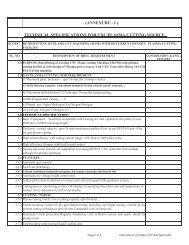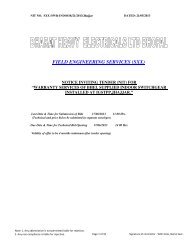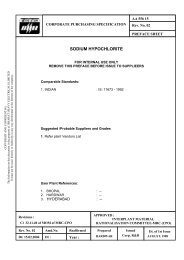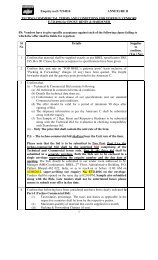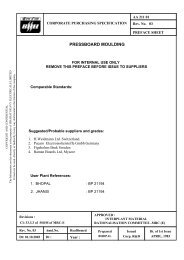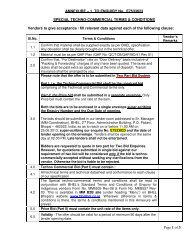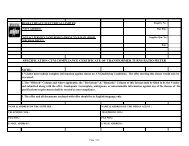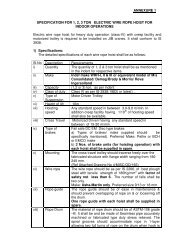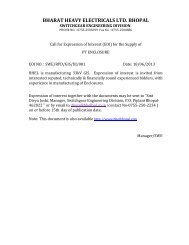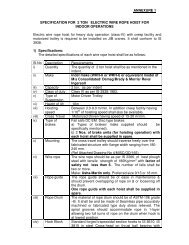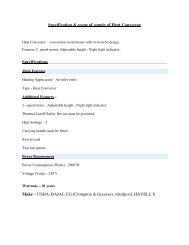instruction manual - BHEL Bhopal
instruction manual - BHEL Bhopal
instruction manual - BHEL Bhopal
Create successful ePaper yourself
Turn your PDF publications into a flip-book with our unique Google optimized e-Paper software.
The groove is normally milled or turned, but for large flanges the groove<br />
is created by means of steel bars welded on top of the flange. The width of<br />
the groove is slightly smaller than the cross-section diameter of the gasket in<br />
order to keep the gasket in position during the assembling work.<br />
Opened sealing joints may be sealed again using the same gasket provided<br />
that the same has not been damaged. If the gasket has become hard or got<br />
small cracks on the surface, it is recommended to change the gasket by a new<br />
one.<br />
When handling and lifting flange, cover etc. with gasket grooves, care<br />
should be taken when using tools and lifting devices to avoid that the grooves<br />
getting damaged or deformed.<br />
Before assembling of groove gaskets, it is checked that the grooves and<br />
contact-surface in the joint are free from foreign particles and that the paint is<br />
free from thick coatings, trickles and drops.<br />
When assembling the rubber cord in the groove, the cord length shall be<br />
continuous . The gasket is given a small surplus length to compensate for<br />
shrinkage.<br />
The gasket is pressed down into the groove without stretching or<br />
slackening.<br />
To prevent the gasket from falling from the groove on vertical surfaces,<br />
the gasket may be spot-glued to the bottom of the groove.<br />
The screws in the sealing joint shall be tightened so that an even pressure<br />
is obtained on the gasket. This is obtained preferably by means of a moment<br />
spanner. Rubber gaskets in grooves need not normally be re-tightened.<br />
Above description is followed generally for turrets, inspection cover<br />
etc. For main tank rim joint, LV turrets of Generator Transformers where metallic<br />
stops are provided, nitrile rubber bonded cork is used, for which following<br />
<strong>instruction</strong>s shall apply.<br />
2.8.2 (i) Gaskets when supplied loose, have no bolt holes in them. They<br />
are usually cut to the size and shape required, although they may<br />
be supplied as straight, angled pieces from which complete gaskets<br />
can be built up.<br />
(ii) Scarfed joints should be used. A 40 mm scarf in 5 mm thick<br />
material is recommended. Joints should be located away from<br />
comers and bolt holes, and should be well bonded, smooth and<br />
free from local thickening. Neoprene solution is used as an adhesive<br />
for joints.<br />
(iii) Gaskets are best stored in hermetically sealed containers in a cool<br />
place. They must be protected from damp, oil and grease-<br />
(iv) To make a gasket joint, first clean the metal surfaces ensuring<br />
that they are free from oil, rust, scale etc. Using one of the flanges<br />
as a template, punch the necessary bolt holes. Insert the bolts<br />
and tighten the bolts sequentially, a little every time so that uniform<br />
pressure is exerted on the gasket until the gasket is compressed<br />
to about 2/3 of its original thickness. Joints should not be subjected<br />
to pressure until tightening is complete. If care is taken in making<br />
joints, and in handling the gasket, it is possible to break and remake<br />
a joint several times, using the same gasket.<br />
Prepared By Samvet Lahari, <strong>Bhopal</strong>. Phone- 5277412



